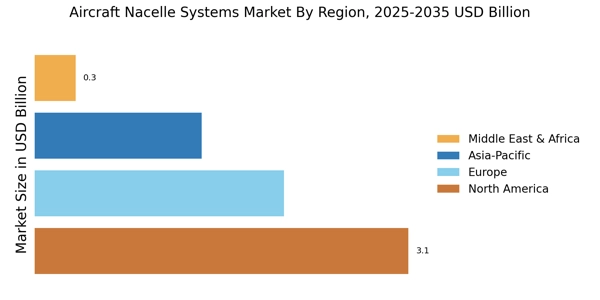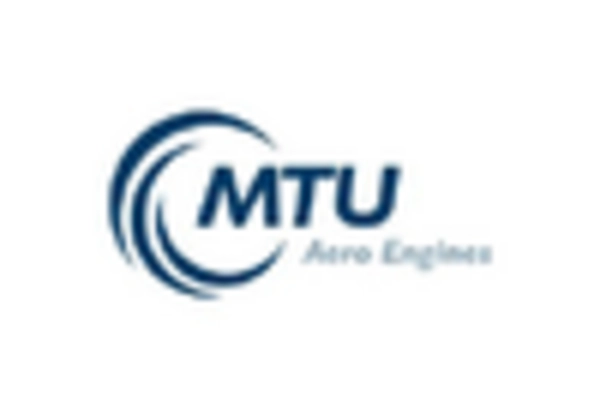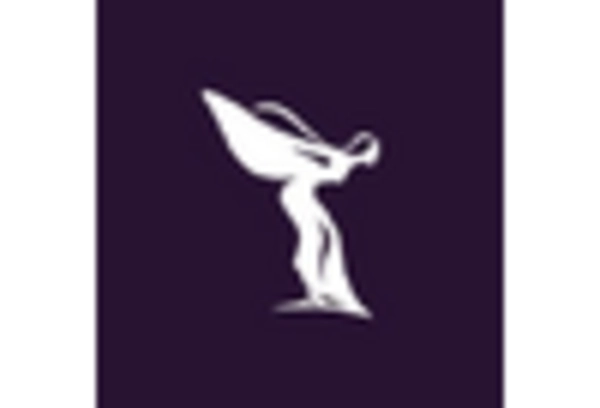Aircraft Nacelle Systems Market Summary
As per MRFR analysis, the Aircraft Nacelle Systems Market Size was estimated at 6.883 USD Billion in 2024. The Aircraft Nacelle Systems industry is projected to grow from 7.145 USD Billion in 2025 to 10.38 USD Billion by 2035, exhibiting a compound annual growth rate (CAGR) of 3.81 during the forecast period 2025 - 2035.
Key Market Trends & Highlights
The Aircraft Nacelle Systems Market is poised for growth driven by technological advancements and increasing demand for fuel-efficient solutions.
- Technological advancements in aircraft nacelle systems are reshaping design and functionality, enhancing performance and efficiency.
- North America remains the largest market, while the Asia-Pacific region is emerging as the fastest-growing area for nacelle systems.
- The commercial aviation segment dominates the market, whereas military aviation is experiencing rapid growth due to increased defense spending.
- Key market drivers include rising demand for fuel-efficient aircraft and regulatory compliance, which are propelling innovation in nacelle technologies.
Market Size & Forecast
| 2024 Market Size | 6.883 (USD Billion) |
| 2035 Market Size | 10.38 (USD Billion) |
| CAGR (2025 - 2035) | 3.81% |
Major Players
Safran (FR), General Electric (US), Rolls-Royce (GB), Honeywell (US), Collins Aerospace (US), MTU Aero Engines (DE), Liebherr (DE), Nexcelle (US), Airbus (FR)


















Leave a Comment